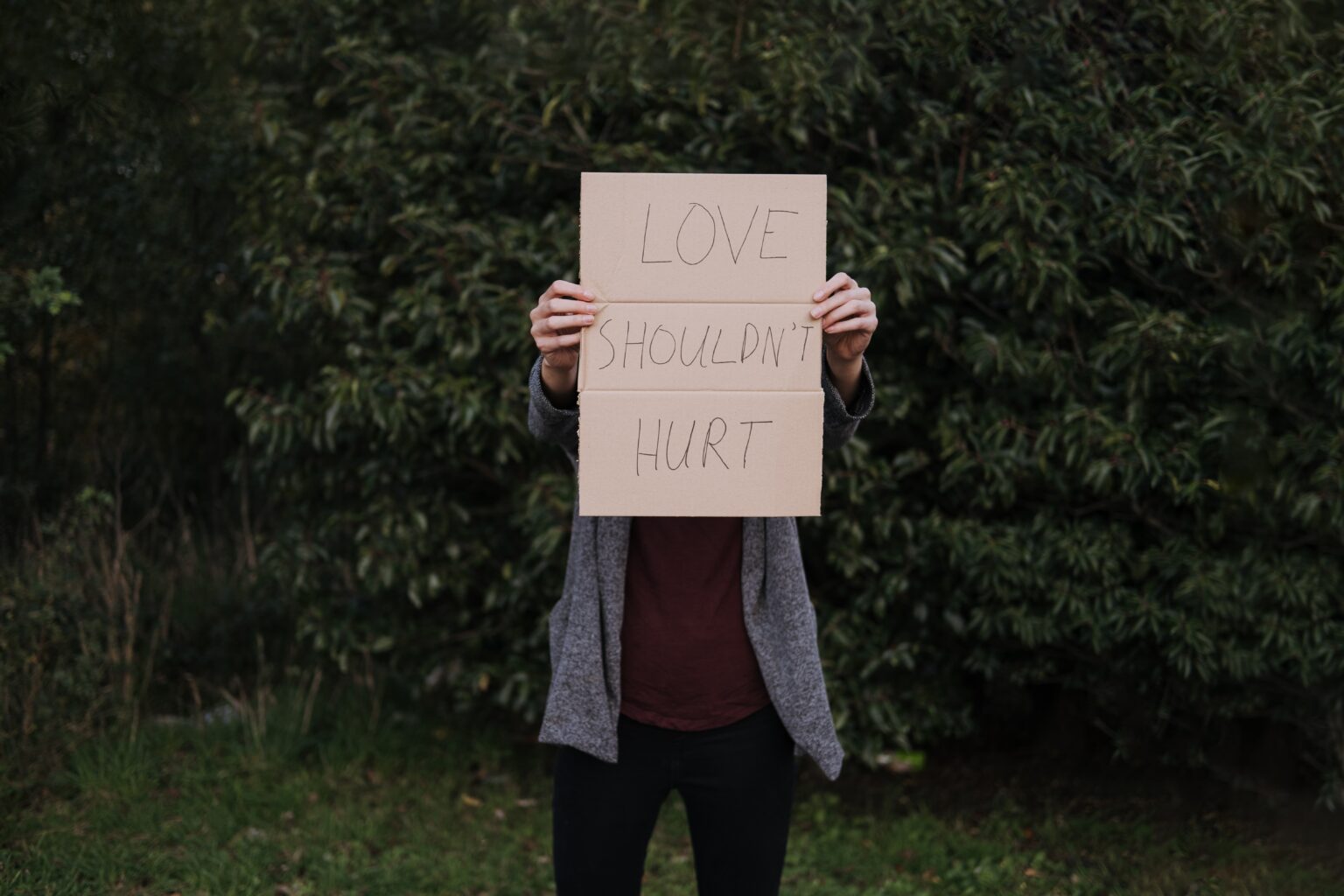Below you can read the first part of Maria Liapi’s presentation (sociologist-researcher, scientific manager of the Diotima Center) entitled “Domestic violence or what we insist on not knowing/recognizing”, on the occasion of her participation in the 8th Psychopharmacology Conference, organized by the Hellenic Psychiatric Society, in November 2021.
Only if we try to listen
without overshadowing the Other with our own understanding (i.e. the
illusion of empathy) we can make ourselves really useful
as “witnesses”. Instead of taking the role of Perseus using the shield/
mirror to decapitate the monster, we should use it to
come close enough to hear—without looking—
her story.
Definition issues
Domestic/intra-partner violence between current or former partners refers to many forms of violence such as psychological/emotional, verbal, physical, sexual violence/rape, financial violence/deprivation, control/monitoring, imposed feeling, relationship control tactics, and bullying.
It is in the 70s and much later in our country when it began to gradually become visible as an extensive social problem, which cannot be interpreted only as a result of psychological or economic factors.
With a long delay, the first relevant investigations are carried out in Greece and it was not until 2006 that significant changes were made to the legislative/institutional framework with the creation of support structures for abused women.
These social developments were undoubtedly the result of women’s struggles who claimed the visibility of the phenomenon, legislative reforms, and culture change, and it is the experience and the movements that have left their mark on state structures/services.
The iconic slogan and analysis about the recognition that the personal is political, politicized personal relationships, sexuality, and the concept of the private, and family sphere thus breaking the silence of the violence and oppression of women that surrounded it.
Today, we are again experiencing a new period of intense feminist claims with new narratives and demands for more social awareness and accountability, for the responsibility of institutions, and the need for collective empowerment and solidarity.
Power relations and culture
Drawing on multiple feminist analyses, the phenomenology, and sociology of the social gender, as well as, the poststructuralist concept of power, we have important tools to analyze and understand the meaning, context, and effects of gender-based violence, and the ways in which gender and sexuality are constitutive of the dynamics that develop in the context of gender-based domestic violence, not the result of them.
To recognize the ways in which the different articulations of femininity and masculinity give us information about how violence unfolds and is experienced at the individual, relational, and structural/institutional levels. In short, intimate partner violence is not about men and women, it is about power structures, relationships, and a culture of power.
Utilizing Foucault’s analysis of power, feminist theory has gone beyond the analysis of a “top-down exercise of patriarchal power” and has included other forms, such as those interwoven through a network of authoritative discourses, the discursive forms of power, and the authoritative systems of epistemic knowledge and epistemologies.
Dipoles and meanings
Let’s think about the following for a moment: the ways in which dipoles work while also exploring the effects of this bipolarity e.g. male/female, straight/gay, white/black, etc. These are categorizations that are internally unstable precisely because of the dependence of the latter to define the former, dipoles which have also been given meaning as symmetrical or complementary, especially for men/women.
However, taking a close look at all the levels of organization of our lives is enough to understand that this is an obvious and deliberate silencing of the power relations that organize them.
Returning to Foucault, power operates in the field of relations. Individuals on the basis of their social placement use tactics and strategies available to them to negotiate power dynamics and enact their resistance to dominant forms of authority.
This approach helps us see men’s power not as a static form – examining it only in the context of intimate partner violence – but also in other forms of relationships in general.
We need to examine other co-constitutive identity categories such as sexism, homophobia, racism, or classism in order to delve into how they are activated and intertwined in the exercise of violence during the management of relational conflicts.
Thus, we can examine not only the personal motivations of each abuser/perpetrator but also the ways in which society creates social inequalities on an individual and group level. Recognizing the impact of social structures on the lived experience of individuals should not make us ignore the intentional agency of subjects.
Otherwise, we risk that our interpretive framework in turn reproduces a new dichotomy between the eternally powerful and potentially aggressive men and the eternally passive victimized women.
The centrality of gender
The concept of biological sex is used as a determining factor in classifying individuals as female and male. The gender category (sex category) is created through the projection of the criteria/characteristics of the biological sex, but in everyday life, this categorization is consolidated and perpetuated through socially required designated/identifying markings that demonstrate the participation/inclusion of a person in one or the other category.
Therefore, a subject can be associated with a certain gender category without meeting the criteria of that biological sex.
Approaching masculinities and femininities through a social gender perspective deconstructs the historically formed essentialist differences between males and females, thus acceding to a more fluid understanding of gender and opening our thinking to the fact that males and females can embody masculinity and femininity to varying degrees.
However, as heterosexual desire signifies the difference and complementarity as dominant narratives, the cultural construction of embodied sexual relations, along with other features of masculinity and femininity, identifies naturalized masculine sexuality as naturally dominant over the feminine which is characterized by conformity, the impossibility of violence, physical vulnerability and the position of a sexual object of masculinity.
Social gender
Hegemonic masculinity imposes its privileged status that is perpetuated through the establishment of a cultural ideal and a social gender apparatus consisting of a set of institutional, psychological, imaginative, and discursive practices and discourses of power.
For instance, religious theologies, depictions, and messages communicated through the media, state policies, etc. which again and again assign rules to bodies, organize them socially, and give meaning to our bodily lived experiences, personal relationships/intimacy, and pleasure, but also animate them in directions against these rules.
At the same time, none of us is completely defined by cultural norms. Gender becomes a matter of negotiation, a struggle, a way to negotiate historical constraints and shape new realities.
We don’t exactly choose it and it isn’t exactly forced upon us. But social reality can and usually does change. Thus the historical meaning of gender can change as norms are re-enacted, rejected, or re-created.
The importance of intersectionality
Intersectionality, the view that different identity categories (race, class, gender, sexual orientation, etc.) are interconnected and intertwined with each other and constitute basic mechanisms of the distribution of power and resources. These determine our availability, access, and resource utilization by surviving subjects and determine their vulnerability, agency, and avoidance of victimization.
Intersectionality also helps us understand the ways in which members of gender-based violence response institutions, such as various professionals, public officials, and experts identify and engage the identity of the individuals/citizens they serve.
I am referring to the biases that are active and operate in the field itself when professionals interact with perpetrators and victims at the individual level as well as at the community level.
Gender-based violence – aspect of the perpetration of gender inequalities
Performing gender is an inevitable social process that we all engage in at all times, gender is a routine, methodical and repetitive fulfillment embedded within our everyday interactions that can be described as “doing gender”. Our beliefs about gender constitute a cultural norm that normalizes behaviors and regulates compliance with them.
In this context, and given that violence is constructed as a sign of masculinity in our culture, men commit violence as a means to demonstrate/signify masculinity and show others that they are real men. Violence is used especially in situations where their masculinity is challenged such as when they consider their women/partners to be a threat to their power or status or they use violence as a counterbalance to the fact that they fall short of the gendered ideal e.g. the financially independent/successful male, the breadwinner (women who are breadwinners are victims in greater percentages), the one who makes all the decisions and is in control.
Although women or LGBTI subjects practice domestic violence, can we not talk about gender-based violence? Such an inquiry examines gender only from an individual perspective and fails to examine the relationship between intimate partner violence and gender at an interactional/relational and structural/institutional level.
Explicit or implicit sexism that exists in all workplaces predominates the male status in the public sphere and the female status in private or caring roles.
The discrediting of women’s professional status, as evidenced by the wage gap, the glass ceiling effect, the low prestige of professions that are largely carried out by women, and a series of discriminations and inequalities are the contextual means in which domestic violence takes place.
Gender is intertwined with income, education, race and sexuality, and more generally socio-cultural conditions.
Thus, we will be able to understand the fact that many women are unable to leave an abusive partner/husband as they are afraid of how they will be able to financially support themselves and their children.
The psychological and economic effects of chronic abuse, that paralyze the victim, are aggravated by discouragement from the police authorities, impunity, and the absence of a supportive framework.
It is worth emphasizing that the femicides that have been committed (18 in the year 2021) dramatically increase fear and victims are trapped in a difficult and unspoken decision about their very lives!
How can we support a victim who has no resources and is unable to leave an abusive relationship if we do not design and implement support programs for the needs of exiting the cycle of violence?
Read Part B here.





